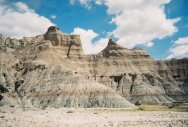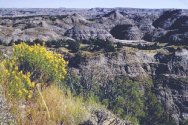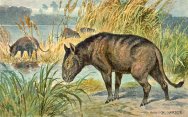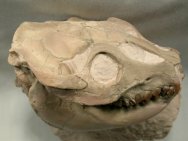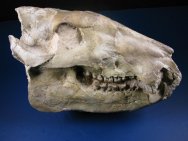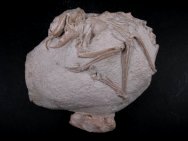Badlands Fossils
Badlands Fossils, including the White River Badlands, Badlands of South Dakota (Brule Formation) and Proximal Areas |
The page within: |
|
Numerous
fossiliferous badlands formations exist in the United States
and Canada. These include Badlands National Park in South Dakota,
Makoshika State Park in Montana, Theodore Roosevelt National
Park in North Dakota; Toadstool Geologic Park in the Oglala
National Grassland of northwestern Nebraska; Dinosaur Provincial
Park is and the Royal Tyrrell Museum of The
Badlands of South Dakota, also simply called the Badlands,
or
the White River Badlands, or the White River Group, is an extensive
area within parts of Colorado, Wyoming, Nebraska, in addition
to South Dakota. This vast area is famous for its diverse and
well preserved mammal fossils that date from the late Eocene
to early Oligocene. Throughout the late 1800s and continuing
today, scientists and institutions from all over The Brule Formation is the uppermost formation in the White River Group. This important fossil formation was named for the Brule Indians that lived in western Nebraska and South Dakota. The Brule Formation is exposed over a vast area of the West, including Nebraska, North and South Dakota, Wyoming, and Colorado, and yields abundant fossils as layers are eroded. Toadstool Geologic Park is located in the Oglala National Grassland in far northwestern Nebraska. Its stratigraphy begins with the oldest Eocene-age Chadron Formation, followed by the Oligocene Brule Formation, and finally the Miocene age rocks of the Arikaree Group. Ichnofossils (trackways) are especially abundant in the Brule Formation, giving scientists insight into the behavior of the Oligocene mammals.
|
|
||||||||||||||||||
Fossil
Museum Navigation:
Home Geological Time Paleobiology Geological History Tree of Life Fossil Sites Fossils Evolution Fossil Record Museum Fossils |

